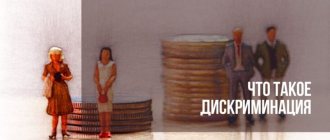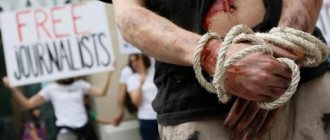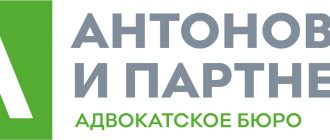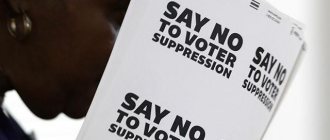New edition of Art. 146 of the Criminal Code of the Russian Federation
1. Assignment of authorship (plagiarism), if this act caused major damage to the author or other copyright holder, -
shall be punishable by a fine in the amount of up to two hundred thousand rubles, or in the amount of the wages or other income of the convicted person for a period of up to eighteen months, or by compulsory labor for a term of up to four hundred and eighty hours, or by corrective labor for a term of up to one year, or by arrest for a term of up to six months.
2. Illegal use of objects of copyright or related rights, as well as the acquisition, storage, transportation of counterfeit copies of works or phonograms for sales purposes, committed on a large scale, -
shall be punishable by a fine in the amount of up to two hundred thousand rubles, or in the amount of the wages or other income of the convicted person for a period of up to eighteen months, or by compulsory labor for a term of up to four hundred eighty hours, or by corrective labor for a term of up to two years, or by forced labor for a term of up to two years. , or imprisonment for the same period.
3. Acts provided for in part two of this article, if committed:
a) has become invalid;
b) by a group of persons by prior conspiracy or an organized group;
c) on an especially large scale;
d) by a person using his official position, -
shall be punishable by forced labor for a term of up to five years, or by imprisonment for a term of up to six years, with or without a fine in the amount of up to five hundred thousand rubles or in the amount of the wages or other income of the convicted person for a period of up to three years.
Note. The acts provided for in this article are recognized as committed on a large scale if the cost of copies of works or phonograms or the value of the rights to use objects of copyright and related rights exceeds one hundred thousand rubles, and in an especially large amount - one million rubles.
Commentary on Article 146 of the Criminal Code of the Russian Federation
1. The social danger of the crime lies in the encroachment on the freedom of creativity guaranteed by the Constitution (Part 1 of Article 44). This crime deprives citizens of moral satisfaction and material interest in creating works of science, literature and art.
The commented article consists of three parts. The main alternative elements of the crime are reflected in parts 1 and 2, and the qualified elements are reflected in part 3 of the commentary. articles. Acts provided for in parts 1, 2 comments. articles belong to the category of crimes of minor gravity, and part 3 - to the category of serious crimes.
2. The main object of criminal encroachment is social relations arising in connection with the implementation by citizens of the constitutional right to freedom of scientific, literary and artistic creativity. An optional object may be the honor, dignity and business reputation of the author and other copyright holder.
3. The subject of infringement is objects of copyright and objects of related rights.
Objects of copyright include: works of science, literature and art, regardless of the purpose and merits of the work, as well as the method of its expression (see Articles 1, 6 - 8 of the Copyright Law) (from January 1, 2008, see Art. 1259 - 1261, 1263 - 1264 Civil Code).
Objects of related rights include phonograms, performances, productions, broadcasts of broadcasting or cable broadcasting organizations (see Article 1 of the Copyright Law) (from January 1, 2008, see Article 1304 of the Civil Code).
4. The objective side of the crime provided for in Part 1 of the comment. article, is expressed in appropriation of authorship (plagiarism), if this act caused major damage.
4.1. Attribution of authorship means the publication or use, under one’s own name or one’s pseudonym, of someone else’s work in whole or in part. Attribution of authorship will occur both in the case where someone else’s work has not yet been published by the author himself, and in the case where it has been published under the author’s real name, his pseudonym, or anonymously. Coercion to co-authorship should be considered as appropriation of authorship.
4.2. The corpus delicti (Part 1) is material in design. The crime is completed (by composition) at the moment of causing major damage to the author or other copyright holder.
4.3. Major damage is an assessment category. When recognizing the damage caused as major, the court takes into account the amount of damage caused, the identity of the perpetrator, the financial situation of the perpetrator and the victim, the nature and degree of public danger of the crime committed and other factual circumstances.
4.4. The concept and content of moral harm are disclosed in Art. 151, 1099 - 1101 Civil Code.
5. The objective side of the crime provided for in Part 2 of the comment. article, is expressed in the illegal use of objects of copyright or related rights, as well as the acquisition, storage, transportation of counterfeit copies of works or phonograms committed on a large scale.
5.1. On the concept, forms and methods of using copyrighted objects, see Art. 16 of the Copyright Law (since January 1, 2008, see Art. 1270 of the Civil Code).
5.2. Illegal use of copyright objects means their use without the consent of the author or other copyright holder, namely: a) without concluding an agreement with the author or other copyright holder in the prescribed form; upon expiration of the contract; in violation of the terms of the copyright agreement, including the use of works in a manner not specified in the agreement; use of works in a territory not specified in the contract; use of the work in an amount exceeding that stipulated in the contract, etc. (on the types, procedure for concluding and conditions of the copyright agreement, see Articles 30 - 32 of the Copyright Law, and from January 1, 2008, see Articles 1285 - 1287 of the Civil Code); b) without a license issued by an organization that manages property rights on a collective basis for public performance, including on radio and television, reproduction of the work by mechanical, magnetic and other recording, reproduction, etc. (see Articles 44, 45, Articles 30 - 32 of the Copyright Law, from January 1, 2008, see Articles 1242, 1243 of the Civil Code).
5.3. Illegal use of an object of copyright does not arise in cases where: a) the work has become public domain (see Articles 27, 28 of the Copyright Law, and from January 1, 2008, see Articles 1281, 1282 of the Civil Code); b) the law allows the use of a work that has not become public domain, without the consent of the author and without payment of royalties (see Part 3 of Article 16, Part 1 of Article 18, Article 19 - 25 of the Copyright Law, and from 1 January 2008, see Articles 1272 - 1280 of the Civil Code).
6. Copies of a work and phonogram are counterfeit, the production or distribution of which entails a violation of copyright and related rights (part 3 of article 48 of the Copyright Law, and from January 1, 2008, see paragraph 4 of article 1252 of the Civil Code) .
6.1. Acquisition - the commission of any actions as a result of which the culprit becomes the owner (actual owner) of counterfeit copies of a work and phonogram (purchase, exchange, receipt as a gift).
6.2. Storage - keeping counterfeit copies of a work and phonogram in premises, warehouses and other places that ensure their safety.
6.3. Transportation is the action of moving counterfeit copies of a work and phonogram in space from one place to another using any vehicle.
7. The corpus delicti (Part 2) is formal in design. The crime is completed (by composition) at the moment of committing the specified actions on a large scale.
8. Storage or transportation of counterfeit copies of works and phonograms in large quantities is a continuing crime.
9. Large size, in accordance with note. to comment Article, the value of copies of works or phonograms or the value of the right to use objects of copyright and related rights is recognized in excess of 50 thousand rubles.
9.1. The cost of counterfeit copies of a work and phonogram is determined by the court on the basis of the prevailing average market prices for similar works and phonograms in a given area.
9.2. The value of the right to use objects of copyright and related rights is understood as the amount of money: a) at which the author and other copyright holder transfers their property rights to them under an agreement; b) which a person using the work through public performance, including on radio and television, reproduction of the work through mechanical, magnetic and other recording, reproduction, etc., should have transferred to the organization that manages property rights on a collective basis.
10. In part 3 comments. The article specifies the qualifying elements of the crime provided for in Part 2 of the article: a) a group of persons by prior conspiracy or an organized group; b) especially large size; c) use of official position.
10.1. On the commission of a crime by a group of persons by prior conspiracy, see paragraph 3 of the commentary. to Art. 35.
10.2. Organized group - see paragraph 7 of the comment. to Art. 35.
10.3. Under extra large size in accordance with note. to comment This article means the cost of copies of works or phonograms or the cost of rights to use objects of copyright and related rights exceeding 250 thousand rubles.
10.4. The use by a person of his official position means that the person, in order to facilitate the commission of a crime, uses the powers and privileges granted through his service, including on the basis of an employment agreement (contract).
11. From the subjective side, the corpus delicti provided for in Part 1 comment. article, is characterized by guilt in the form of direct or indirect intent. The corpus delicti provided for in Part 2 is characterized by guilt in the form of direct intent.
11.1. In the case of the acquisition, storage, transportation of counterfeit copies of works or phonograms, the special purpose required to qualify the act as a crime is the sale of these items.
11.2. Sales means alienation of copies of a work or phonogram accomplished in any way (sale, exchange, etc.).
12. The subject of a criminal offense is a natural, sane person who has reached the age of 16 at the time of the commission of the crime.
Provocation of crimes by law enforcement agencies is incompatible with the principles of international law
Taking into account the above arguments and principles of the ECHR, it can be stated that in cases in which materials from operational activities are used as evidence, it is necessary to carefully check not only the formal reasons and grounds (the presence of a resolution to conduct the event, certified by the head of the relevant investigative intelligence agency), but also to investigate the purpose of the operation (which must actually correspond to the goals of operational-search activities formulated in the law on operational intelligence, and not only the letter, but also the spirit of the law). Moreover, this must be done regardless of the position taken by the suspect in the case, i.e. even in the absence of a defense allegation of entrapment. Speaking in procedural language, in such cases the subject of proof (Article 73 of the Code of Criminal Procedure of the Russian Federation) must include proving the fact of “absence of provocation” during the conduct of an operational measure.
Meanwhile, until recently it was possible to come across cases in which materials from operational investigations were used, but there was no resolution to carry them out. Until now, the texts of resolutions on conducting operational investigations contain wording that does not correspond to the objectives of operational investigations. Such, for example, as “for the purpose of documenting the criminal activities of the name.” Although it is obvious that documenting the results of operational activities is not the goal (task) of the event, but giving it a material form. The goals of conducting operational investigations cannot differ from the general goals of the tasks of operational-search activities formulated in Art. 1 and 2 of the Law on Operational Doctrine and are not subject to arbitrary expansion:
- in accordance with Article 1 of the said law, operational-search activity is a type of activity carried out publicly and secretly by operational units of state bodies authorized by this Federal Law (hereinafter referred to as the bodies carrying out operational-search activities), within the limits of their powers through operational-search activities in order to protect life, health, rights and freedoms of man and citizen, property, ensure the security of society and the state from criminal attacks.
- in accordance with Article 2 of the law on operational intelligence, the tasks of operational investigative activities are: identification, prevention, suppression and detection of crimes, as well as identification and identification of persons preparing, committing or committing them;
carrying out the search for persons hiding from the bodies of inquiry, investigation and court, evading criminal punishment, as well as searching for missing persons;
obtaining information about events or actions (inaction) that create a threat to the state, military, economic or environmental security of the Russian Federation;
identification of property subject to confiscation.
The presence and sufficiency of reasons and grounds for the start of an operational activity should, at a minimum, include information about the subject’s social circle, his connections with crime, the commission of similar actions earlier, the motivation for the need to promptly suppress the criminal activity of the person involved through special investigative methods, and not in the usual procedural order. That is, the strict need to use special methods should be obvious to the so-called. average outside observer and is determined not only by the formal classification of the relevant crime as grave, especially grave or moderately grave, but also by the special social danger of both the person(s) committing it and the specific crime itself. Establishing a strict necessity in each specific case before using special investigative techniques is required to determine the priority of the public interest over the personal right of a particular suspect to use appropriate legal procedures in the investigation and establishment of his guilt in committing a crime. This probably suggests the priority of public security interests in crimes related to the investigation of terrorism, etc. crimes committed in a generally dangerous manner, with expected consequences in the form of loss of life, undermining the defense capability of the state, causing irreparable harm to the environment, violent crimes against children associated with kidnapping, etc. The priority of public interests when investigating facts of extortion of a bribe by an official with authority is also obvious. At the same time, the right of a citizen to investigate charges against him in compliance with all legal rights and procedures provided for by the Code of Criminal Procedure prevails over public interests when investigating crimes that do not entail a potential threat of consequences in the form of causing death or grievous harm to human health (as in terrorism) , irreparable harm to the environment, grave material consequences for specific subjects, significant violation of the legal rights and interests of victims (as in extortion of a bribe), etc.
Another comment on Art. 146 of the Criminal Code of the Russian Federation
1. Most of the elements of this crime are disclosed in Resolution of the Plenum of the Supreme Court of the Russian Federation dated April 26, 2007 No. 14 “On the practice of courts considering criminal cases of violation of copyright, related, inventive and patent rights, as well as illegal use of a trademark.”
2. The objective side is characterized by: a) an action in the form of misappropriation of authorship (Part 1), resulting in major damage (property (material) damage); b) illegal use of copyright or related rights, or acquisition, storage, transportation of counterfeit copies of works or phonograms (Part 2), committed on a large scale (note to the article).
Arbitrage practice
Copyright protection in the Russian Federation has become widespread not so long ago, but the courts have accumulated practice on this issue. In view of the tightening of measures to supervise the use and distribution of counterfeit products, Roskomnadzor issued an anti-piracy order, according to which it is prohibited to download films, music and other intellectual property products on Internet resources and distribute them in an accessible way.
The court must examine the evidence received and find out:
- How many pirated copies have been produced?
- How many works have been copied?
- How many people were involved in the crime?
An example of legal proceedings in a case of copyright infringement is the decision of the Kirovsky District Court of Tomsk against a citizen who committed the following criminal acts:
- storage;
- shipping;
- sale of illegal products.
For the committed acts, the citizen was sentenced to a fine of 30 thousand rubles, despite the fact that the offense was committed on a large scale.
Mitigating circumstances such as:
- A young child.
- Chronic illness.
- No minor offenses.
- Positive characteristics of a citizen as an individual.
Due to these circumstances, the preventive measure was chosen to be minimal. The procedure for paying the imposed fine is regulated by the Penal Code of the Russian Federation (Criminal Executive Code of the Russian Federation). A criminal record, even expunged, must be entered into the personal file of the accused.
In the vast majority of cases, judicial practice is accusatory in nature. Examining the evidence, the judge is convinced that there is a crime, the facts confirm this, and pronounces a sentence. An acquittal is rendered if the content of the evidence indicates that the defendant is not guilty.
The court does not have the right to prohibit a person from engaging in activities or holding positions, since this does not include the disposition of an article of federal legislation.
The convicted did not exercise the right to a jury trial. Cases were considered by the presiding officer without inviting other persons. The court takes into account that documents of an administrative or other nature are not products of intellectual activity. They are not the subject of an offense.
The crime has a statute of limitations - since it is not a serious crime, the statute of limitations is two years. This offense is not reclassified as an administrative offense, which is regulated by the norms of the Code of Administrative Offences.






